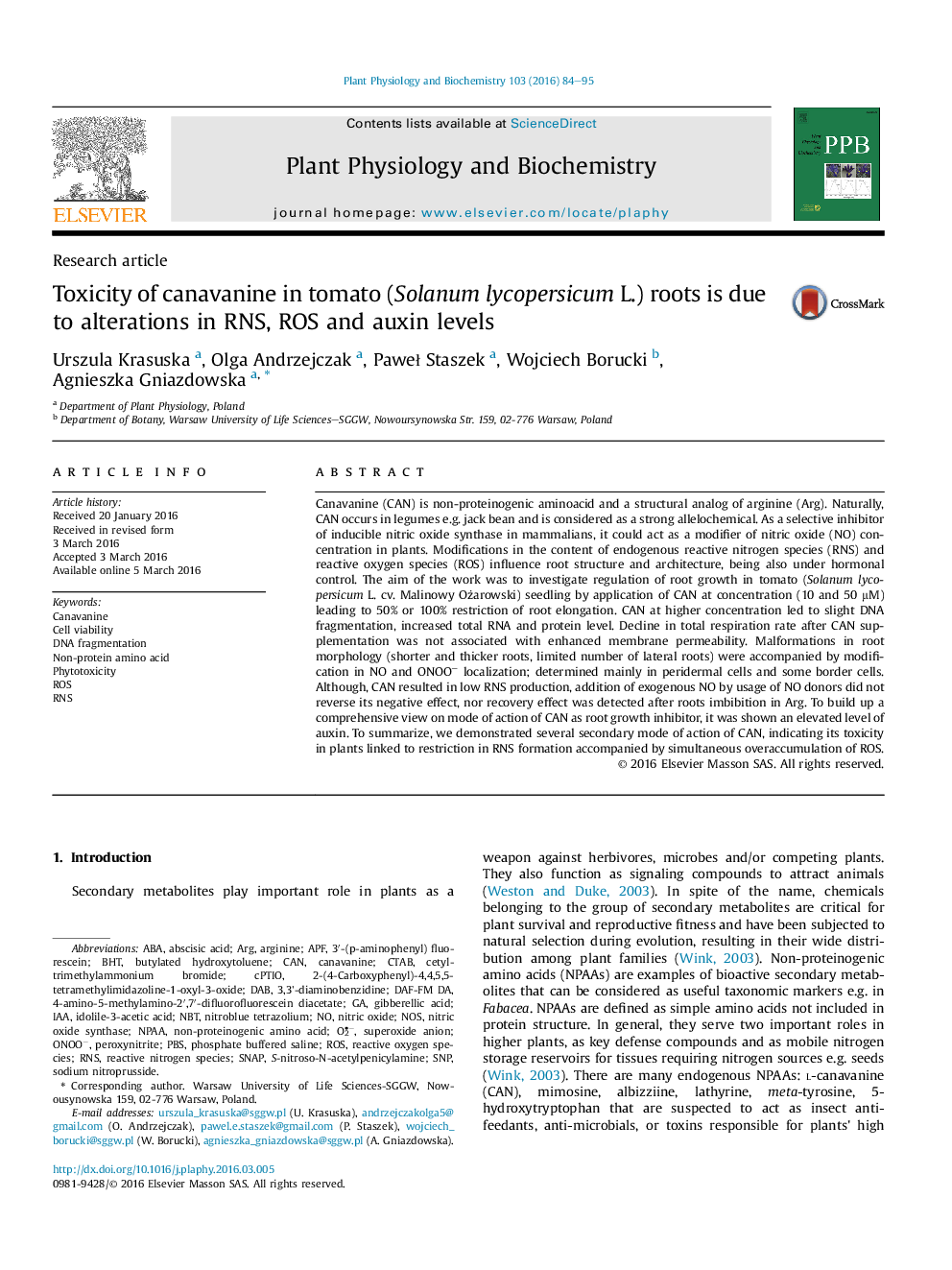| کد مقاله | کد نشریه | سال انتشار | مقاله انگلیسی | نسخه تمام متن |
|---|---|---|---|---|
| 2015604 | 1541918 | 2016 | 12 صفحه PDF | دانلود رایگان |

• Canavanine toxicity is not reversed by Arg.
• Canavanine does not lead to DNA fragmentation, but increases RNA and protein level.
• Canavanine lowers RNS emission, but NO application does not reverse its toxicity.
• Tissue ROS pattern and content is modified by canavanine.
• Canavanine increases IAA tissue level.
Canavanine (CAN) is non-proteinogenic aminoacid and a structural analog of arginine (Arg). Naturally, CAN occurs in legumes e.g. jack bean and is considered as a strong allelochemical. As a selective inhibitor of inducible nitric oxide synthase in mammalians, it could act as a modifier of nitric oxide (NO) concentration in plants. Modifications in the content of endogenous reactive nitrogen species (RNS) and reactive oxygen species (ROS) influence root structure and architecture, being also under hormonal control. The aim of the work was to investigate regulation of root growth in tomato (Solanum lycopersicum L. cv. Malinowy Ożarowski) seedling by application of CAN at concentration (10 and 50 μM) leading to 50% or 100% restriction of root elongation. CAN at higher concentration led to slight DNA fragmentation, increased total RNA and protein level. Decline in total respiration rate after CAN supplementation was not associated with enhanced membrane permeability. Malformations in root morphology (shorter and thicker roots, limited number of lateral roots) were accompanied by modification in NO and ONOO− localization; determined mainly in peridermal cells and some border cells. Although, CAN resulted in low RNS production, addition of exogenous NO by usage of NO donors did not reverse its negative effect, nor recovery effect was detected after roots imbibition in Arg. To build up a comprehensive view on mode of action of CAN as root growth inhibitor, it was shown an elevated level of auxin. To summarize, we demonstrated several secondary mode of action of CAN, indicating its toxicity in plants linked to restriction in RNS formation accompanied by simultaneous overaccumulation of ROS.
Journal: Plant Physiology and Biochemistry - Volume 103, June 2016, Pages 84–95